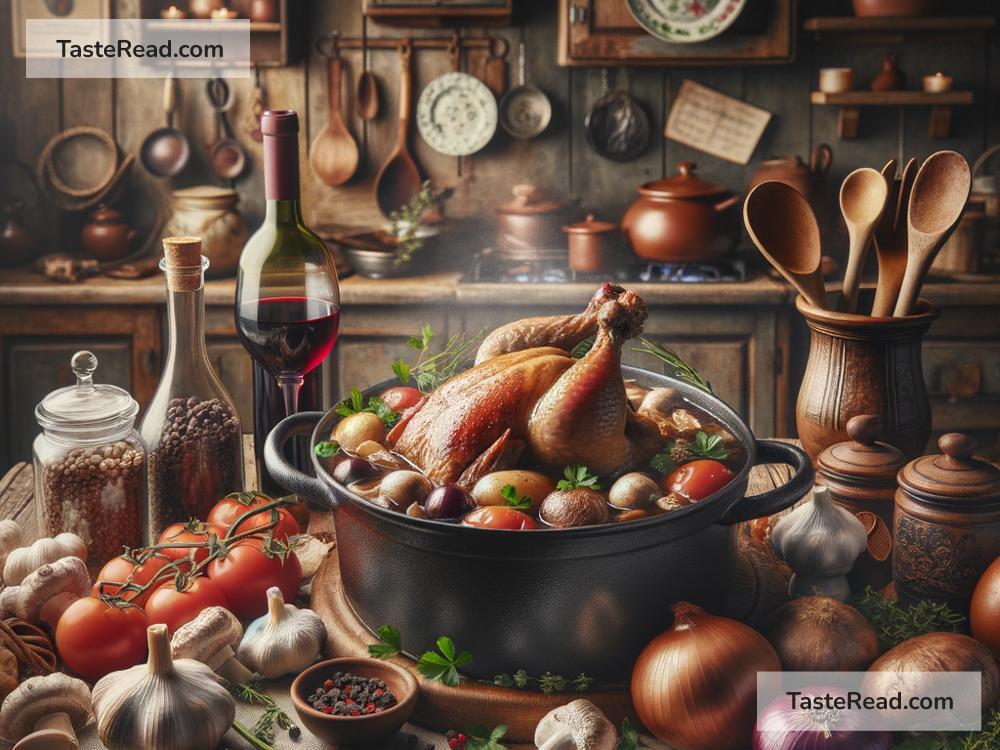How the French Coq au Vin Became a Traditional Celebration Dish
French cuisine is world-renowned for its elegance, sophistication, and the unparalleled ability to turn simple ingredients into culinary masterpieces. Among the constellation of French dishes that have gained international fame, Coq au Vin stands out as a delicious emblem of French culinary tradition. But how did this humble chicken dish cooked in wine become a symbol of celebration in French culture?
The Humble Beginnings
To understand the journey of Coq au Vin, we must travel back in time to rural France. The name itself translates to “rooster in wine,” pointing to its rustic origins. In the old days, Coq au Vin was a practical solution to a common problem: what to do with an older, tougher rooster once its crowing days were over. The answer was simple yet ingenious—slow-cook the bird in wine with herbs, mushrooms, and sometimes even bacon, to tenderize the meat and infuse it with flavors.
This method of cooking not only made the meat palatable but also turned a necessity into a delectable feast. The wine, a staple in French households, played a crucial role in transforming the tough meat into a tender, aromatic dish. As with many great culinary innovations, necessity mothered a dish that would transcend its modest beginnings.
From Farmhouses to Festivities
The transformation of Coq au Vin from a peasant dish to a celebration meal is a testament to the evocative power of flavors and the importance of food in French culture. Originally, it was a practical dish, made and enjoyed by farming families. However, its comforting and hearty nature, combined with the richness and depth of flavor that comes from lengthy, slow cooking, caught the attention of those beyond the farmsteads.
As Coq au Vin made its way to restaurants and cookbooks, it began to shed its humble origins. French chefs and home cooks alike started to refine the dish, using better cuts of chicken, fine wine, and a selection of herbs and spices to elevate it from a necessity to a delicacy. It wasn’t long before Coq au Vin was being served at celebrations and gatherings, a symbol of French culinary heritage and the joy of shared meals.
The Power of Tradition
The ascendancy of Coq au Vin to a celebratory dish speaks volumes about the French attitude towards food and tradition. In France, meals are much more than just sustenance; they’re an opportunity to come together, to celebrate the past while enjoying the present. Coq au Vin, with its rich history and humble origins, embodies this philosophy perfectly. It’s a dish that honors the resourcefulness of past generations while still being a cherished part of modern festivities.
Moreover, Coq au Vin’s versatility and the fact that it tastes even better a day after it’s made have made it a perfect dish for gatherings. It can be prepared ahead of time, allowing hosts to spend more time with their guests—a practice that fits seamlessly into the French ethos of hospitality and conviviality.
Celebrating with Coq au Vin Today
Today, Coq au Vin retains its place at the French table, especially during celebrations, from intimate family gatherings to large festive occasions. It’s a dish that tells a story, a piece of culinary heritage that connects the present with the past. Making Coq au Vin is not just about following a recipe; it’s about partaking in a tradition that has been passed down through generations.
Whether in a rustic countryside home or a chic urban apartment, serving Coq au Vin is a way to celebrate not just a special occasion, but also the richness of French culture, the importance of family and friends, and the joy of sharing a meal made with love.
In Conclusion
The story of Coq au Vin is a reminder of how food can transcend its original purpose, becoming a part of cultural identity and tradition. From its rugged origins in the French countryside to its status as a cherished dish for celebrations, Coq au Vin symbolizes the journey of French cuisine itself—rooted in practicality, refined through creativity, and embraced around the world for its heartwarming qualities. So, the next time you sit down to a plate of Coq au Vin, remember: you’re not just tasting chicken cooked in wine; you’re partaking in a longstanding tradition that celebrates the joy of French culinary art.


